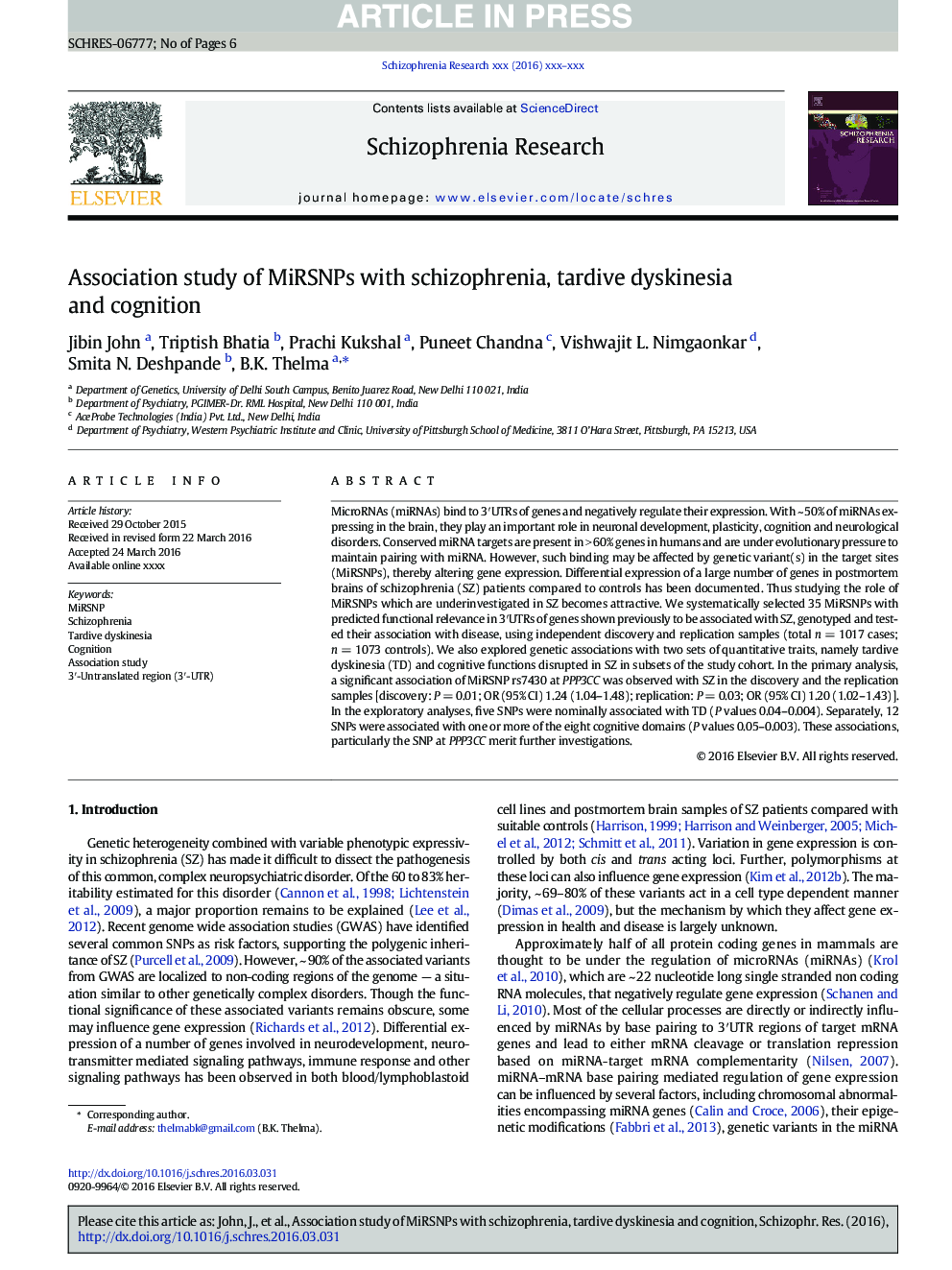| Article ID | Journal | Published Year | Pages | File Type |
|---|---|---|---|---|
| 6822696 | Schizophrenia Research | 2016 | 6 Pages |
Abstract
MicroRNAs (miRNAs) bind to 3â²UTRs of genes and negatively regulate their expression. With ~ 50% of miRNAs expressing in the brain, they play an important role in neuronal development, plasticity, cognition and neurological disorders. Conserved miRNA targets are present in > 60% genes in humans and are under evolutionary pressure to maintain pairing with miRNA. However, such binding may be affected by genetic variant(s) in the target sites (MiRSNPs), thereby altering gene expression. Differential expression of a large number of genes in postmortem brains of schizophrenia (SZ) patients compared to controls has been documented. Thus studying the role of MiRSNPs which are underinvestigated in SZ becomes attractive. We systematically selected 35 MiRSNPs with predicted functional relevance in 3â²UTRs of genes shown previously to be associated with SZ, genotyped and tested their association with disease, using independent discovery and replication samples (total n = 1017 cases; n = 1073 controls). We also explored genetic associations with two sets of quantitative traits, namely tardive dyskinesia (TD) and cognitive functions disrupted in SZ in subsets of the study cohort. In the primary analysis, a significant association of MiRSNP rs7430 at PPP3CC was observed with SZ in the discovery and the replication samples [discovery: P = 0.01; OR (95% CI) 1.24 (1.04-1.48); replication: P = 0.03; OR (95% CI) 1.20 (1.02-1.43)]. In the exploratory analyses, five SNPs were nominally associated with TD (P values 0.04-0.004). Separately, 12 SNPs were associated with one or more of the eight cognitive domains (P values 0.05-0.003). These associations, particularly the SNP at PPP3CC merit further investigations.
Related Topics
Life Sciences
Neuroscience
Behavioral Neuroscience
Authors
Jibin John, Triptish Bhatia, Prachi Kukshal, Puneet Chandna, Vishwajit L. Nimgaonkar, Smita N. Deshpande, B.K. Thelma,
